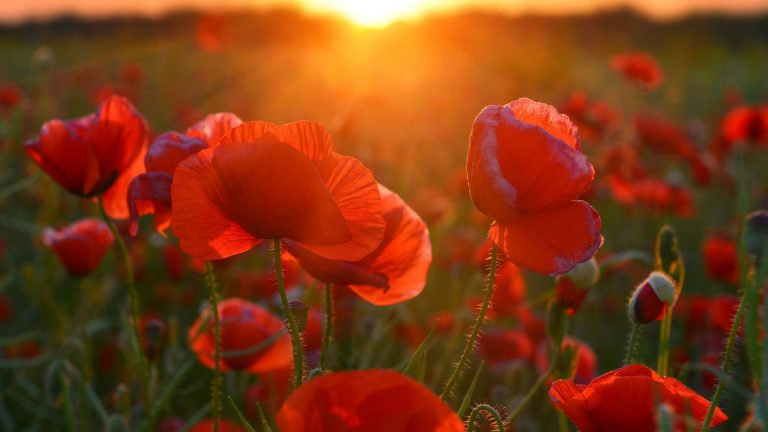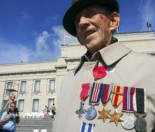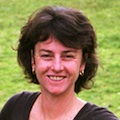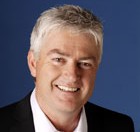Isn’t it fantastic the way schools these days are placing so much emphasis on Anzac Day and New Zealand’s involvement in the World Wars. It seems to me that children of today are far more aware of what Anzac is all about and the price New Zealand paid for freedom than in our day.
For a nine year old to come home from school with a special certificate congratulating her on her “interest in and contribution to our Anzac discussions” is pretty cool I think. School projects and homework assignments that focus on this period of our history do a great job in heightening awareness amongst our kiwi kids.
I have always had an interest in the Anzacs, but I think there was possibly a time in the 1970s where we thought that all this would be forgotten when the last soldiers passed away? Not at all. An amazing thing has happened. There has been a burgeoning pride for a number of years as successive generations who, while they have no idea of the hardships of war, or, what it was like to fight to the death in battle, have embraced this annual occasion.
Young New Zealanders on their OE are making extraordinary efforts to visit remote corners of the world, to the graves and to the scenes of the battles in which the ANZACs fought. As the number of old soldiers in the parades dwindle, the passion and pride for what they did for NZ just grows and grows.
Three years ago I produced a TV series called Road To Athens. It followed nine athletes on the path to the Olympic Games beginning about nine months out from the event. When we started we didn’t know if any of our chosen ones would actually be selected for New Zealand’s Olympic Team. As the Games got closer we had to follow our ‘stars’ to their training camps around the world. This included visiting 1500 metres runner Nick Willis in Michigan, Equestrian Louisa Hill in Germany and the Evers-Swindell twins in Belgium.
While in Belgium I decided to re-visit a place I had been to many years before on my OE. Ypres is about 90 minutes south of Brugges, in the heart of the Flanders Fields of Belgium near Passchendale and Somme where the red poppies grow. It was the centre of some of the bloodiest battles of the Great War.
While this was in the First World War, my Dad was in the Second World War, serving with the 23rd Battalion in Egypt and Italy. He was a bit of a larrikin, I think, because he fibbed about his age when he signed up and went away as a youngster.
I always remember he brought back some German binoculars and I was always intrigued about who they belonged to and what they’d seen. He used to polish his medals every Anzac Day and head off to the Dawn Service, then disappear to the RSA for most of the day. I remember visiting the Timaru RSA in its ’60s and ’70s heyday. What a rowdy, vibrant place. They remembered their fallen mates in style in those days.
Growing up in South Canterbury I began to hear stories about the horror of the First and Second World Wars, and I developed a strong desire to visit the row upon row of white gravestones in the beautifully manicured war cemeteries.
Remember there were no live telecasts in those days, just grainy black and white Movietone news reels at the Pictures, but somehow the sight of the row upon row of white graves resonated. As a 19 year old on my OE I decided that I had to make a pilgrimage. I’d never heard of Ypres or “Ieper” as it is written by the locals, but I read that 1.7 million soldiers were killed or wounded in this area which was the heart of many of the battles. I decided that this would be a place to visit.
I remember reading a book on New Zealand by historian Jock Phillips called “A Man’s Country”. He related how New Zealand’s blokey nature had been created by a number of factors. The early years were so rough there was no room for women, and by the turn of the 20th Century, when New Zealand was coming of age as a Nation, our youngest and brightest men were taken away and never came back. That was the First World War. 20 years after that war when we were just coming right, World War 2 began and once again New Zealand emptied out of young, fit, industrious men.
It is amazing we ever recovered.
On that first OE I was very homesick and remember thinking that I was at the age that if I’d been born two generations earlier, I would have been right there in the thick of battle. I couldn’t help but think that if I felt homesick in the middle of peace time, how awful it must have been to be homesick and scared witless in the middle of a frightening war.
So returning to Ypres 25 years later was a moving experience. What touched me and our TV crew the most, was the huge memorial to the men of the Commonwealth who had died in that region for liberty.
The memorial is called the Menin Gate and is set right in the middle of town. It looks like a small version of the Arc de Triomphe in Paris. During the day it’s part of the main street. Engraved on the Menin Gate are the names of all the men whose bodies were never found.
The men who were buried were given a simple white gravestone in a manicured cemetery. But 55,000 men were never recovered. They simply vanished or vaporized or were unidentifiable. So the names of these men from England, Scotland, Wales, Ireland, Australia, New Zealand and Canada are there for all to see and remember.
The Gate was built in 1927 and every night of the year since then the main street of Ypres is closed for 20 minutes. At 8 pm a crowd of locals and tourists gather in solemn and reflective silence. Three members of the local brass band march into the centre of the memorial and play The Last Post. It is an incredibly moving experience and it happens 365 days of the year and has done for nearly 80 years. The Germans stopped it during the Second World War.
The last notes echo around the memorial, the buglers retreat and the onlookers ease away to their homes or prepare for the next stop on their tour. But the memory of that haunting sound and the thousands of names and the fact that the people of this town still care, stays with you.
So Anzac Day will soon pass again, and I’ve realised that it has almost become my favourite day of the year. It generally starts early and evolves into a delightful family day. We have to decide each year whether to make our own ultimate sacrifice – and get out of bed early for the Dawn Parade or go to a more civilised Parade later in the morning. This year we had a school service with School Choir.
My Dad, in his mid eighties and with limited mobility, was there with his medals proudly on his chest. My Mum was beside him with her own memories of being left behind in New Zealand during the War years.
The choir sang beautifully, the words were appropriate and the Last Post again echoed around the vestibule.
However, for me the most poignant part of the service was when the Principal read out the 220 names of every boy from the school who had died fighting for his country. It staggered me that there were so many from one school. Off to fight an unknown enemy … and never to come home. One family lost three sons, several families lost two.
So we are doing well as a Nation that we still seem to care. And that the schools care. Not only did they welcome the 9 year old with her Poppa’s medals hanging on by a thread to the faded ribbons, but lots of time is given to the classroom full of other children who wanted to talk proudly of their grandfather’s and great-grandfather’s experiences.






